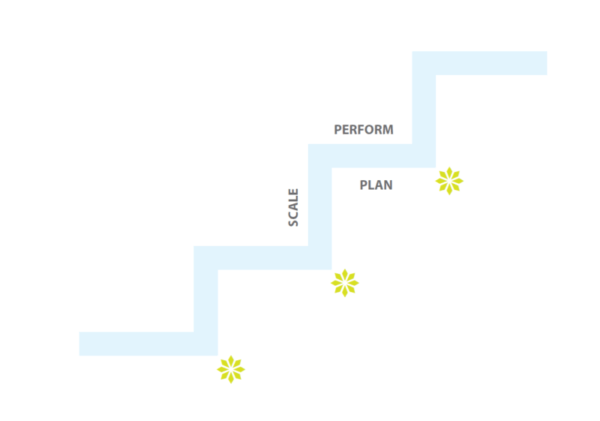
Everyone knows when change occurs in an organization – when people stop working the old way and start using the new way — there will be a performance dip. In my early days as a consultant, I even taught clients about the typical “J” curve or the “Valley of Despair,” as it was called. We had that conversation as a project started, so the client would know what to expect: a temporary loss, then improvement, then a new stability.
But, is that true? Do companies have to experience a downturn before realizing the benefits of the change? Stated another way, can they afford a drop in performance? Maybe they could in the business world of yesterday, when the pace of change was slower, and the change cycles were longer and less frequent. But today’s reality is one of constant change. To compete companies must be nimble; they don’t have time for a trip through The Valley of Despair.
If your company can’t afford the dip, and you agree that it’s not inevitable, how do you avoid it? You must help your teams strengthen as they climb. Imagine an experienced mountain climber. Each time he tackles a new mountain, he gets stronger and more skillful. In fact, he might become faster and better at climbing as he goes. In between trips, he stabilizes and carefully plans his next ascent. He is moving upward, and only upward – getting only better by building on previous experiences.
Your organization needs that “perform, plan, scale” mindset. Most change comes in stages or waves, and as you plan for the next change, help your team strengthen their performance. In other words, use each change to get better at change. Your tools are high expectations, clear communication, and thoughtful planning and execution.

Another tool at your disposal is momentum. Successful change has an expiration date – it’s essential to achieve momentum – early wins or positive impacts on the business — within 90 days. Engineering successes demonstrates legitimacy to the wider organization. If you don’t get that – if you miss the 90-day window — the early energy and commitment can taper off. Keep the “Do it in 90!” rule central to your plans.
Looking back on my earlier years as a consultant, teaching clients to expect a performance dip, I realize I was taking the easy way out. The drop in performance does happen, but it’s also an excuse, used when the change doesn’t show benefits immediately. Don’t get me wrong, change is not easy, and you won’t always get it right the first time, but if you actively manage the change and expectations – yours and those of the organization – you can keep moving upward.
- Managing change is about getting to benefits as soon as possible.
- The organization can get stronger and better at change during the change and while planning the next ascent.
- Momentum has an expiration date. You have 90 days to make a positive impact and demonstrate that the change is legitimate. If we miss the window, we’ve lost the upward energy. Do it in 90!




